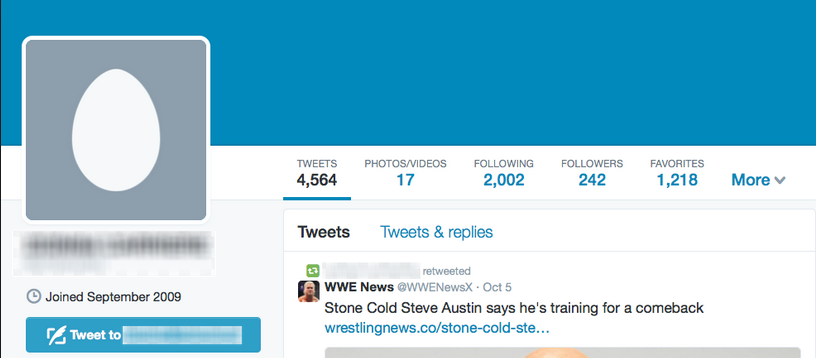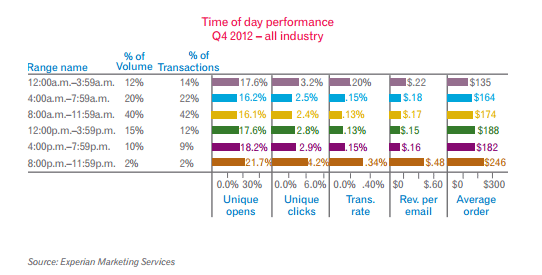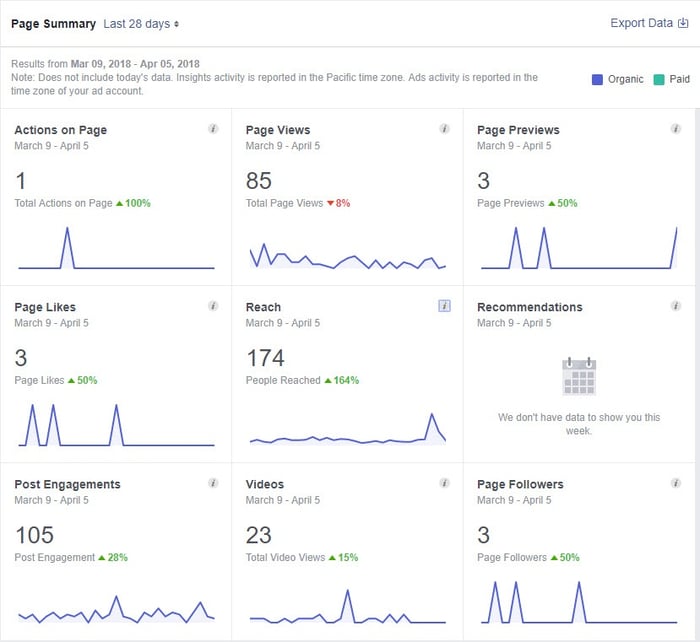Are Guest Blogging Services Worth It?
Guest blogging services can get a bad rap. Some fear they are too spammy, may cost too much and are low-quality.
5 min read
 Samantha Walls
:
Aug 10, 2020 7:09:11 PM
Samantha Walls
:
Aug 10, 2020 7:09:11 PM

For small business owners, social media marketing services are STILL one of the most underutilized marketing tactics available.
Everyone has or should have a Facebook page, LinkedIn profile, Twitter or Instagram account and a Google Business page. If you have a Google Plus page, it will no longer be available since Google is shutting down the platform around August 2019.
While it is true that most companies have dabbled with social media channels and set up their pages, most small companies pay little or no attention to these low cost and potentially high-impact marketing opportunities.
Most small company social media accounts are a barren wasteland of blank avatars, little to no postings and small followings.
Why is this? … It’s no time, no money or no direction!!
Small business owners are so busy putting out fires, that these valuable marketing portals are being ignored at the expense of future business.
With a little time, effort and some basic direction, we can show you how to kick start your social media efforts, and improve your results.
Check out these quick social media best practices to jump-start your campaign.
Assuming you have already set up your profiles, you'll need to look very closely at where your customers spend their time. Look at your analytics data to see which networks are engaging your visitors. Each network offers something different for every audience, so knowing where your customers spend most of their time is essential.
If you have no data to rely on, you have posted nothing to any social media channel and/or you have no idea where your potential customers spend their time, you'll need to start from scratch. Start posting to the big 5 channels first. Facebook, Twitter, LinkedIn, Google Plus and Pinterest. If you predominantly market to millennials, look to Snap Chat and Instagram.
Spend some time thinking about what might be the best place to post before signing up for everything.
Your social media profile is an extension of your business brand. For businesses that are targeting millennials, social media channels are one of the first stops in their decision-making process.
If you have blank avatars on your Twitter or Facebook pages, or profiles that look like they belong to a different company, you’ve got a problem.

When someone checks you out on Facebook, Twitter, Google or LinkedIn, you want them to know that they are dealing with your organization. Use the same colors, logos and similar images as you do with your other marketing collateral, so that it is instantly recognizable.
Also, make sure that you use a consistent tone or voice. If your brand is professional, maintain that vibe. Changing it up to a youthful and snarky tone will only confuse and potentially alienate your buyer personas. While your business may serve different customers, your marketing should be aimed at your target audience.
Arriving at a Facebook page and seeing that the last post was two years ago says something about a business. Unfortunately, for many of the small businesses that we meet, this is precisely what we encounter.
Publishing occasionally is a step in the right direction, but it will not yield the primary results that you are looking for – building an audience and driving targeted traffic to your website.
Determine which social media channels will yield the best results for your business and then work with your team to establish a regular publishing schedule for each channel that you will be working with.
Regularity, like brand consistency, helps establish a sense of reliability for your audience. This is a very important trait in a company that you’re considering doing business with.
At a minimum, if you are just getting started, consider the following schedule.
Once you have maintained some consistency, you can start to track the impact of your postings and determine the appropriate frequency and time frames for your posts.
If you try to post 3 times a day over 5 different networks, you'll spend most of your day pulling your hair out. The good news is that there are several free and paid tools out there to help you automate the process.
Any of these tools will automate the process of pushing your social media posts out. Spend 30 minutes in the morning putting together your messaging for each channel and let the software take care of the publishing for you.
Our friends at Buffer (yes, we are clients) have a great social media posting guide that can help you determine the ideal frequency to post for each social media channel. However, you may need to experiment a bit on your own. If your audience responds better to weekend posts, then experiment with different times and messages to increase engagement.

B2B customers might have better engagement rates at 7:30 am on Tuesdays and Thursdays. You are probably starting to see that it all depends on your specific industry and customer behavior. What industry benchmarks tell you may not work for your particular business.
 Whether its Google, Facebook, Twitter or LinkedIn, the goal of your social media activities is not to close sales. While increased sales can be a by-product of an effectively operated social media strategy, its biggest opportunities lie in creating awareness for your product or service or maintaining communication with your legions of satisfied customers.
Whether its Google, Facebook, Twitter or LinkedIn, the goal of your social media activities is not to close sales. While increased sales can be a by-product of an effectively operated social media strategy, its biggest opportunities lie in creating awareness for your product or service or maintaining communication with your legions of satisfied customers.
It is important for companies to dialogue with their audience and avoid engaging in a one-sided conversation.
Unfortunately, many small companies just starting out with social media make the mistake of making overly salesy posts, or just posting a few pieces of content and never engaging with their audience.
Active engagement is the key!
Participating in group discussions on LinkedIn, or hosting chats on Twitter are just a few of the opportunities to speak with your audience and not at them.
If your thought process is telling you that pushing 5 posts a day Facebook, 7 days a week, is going to get you noticed, you are mistaken. It will likely lose you followers. Give your audience VALUE!
What are your followers concerned with? What problems are they struggling with? Are there solutions that you can provide to these issues? Will some of the content that you created answer their questions?
You have to do this one! You won't have any idea of how well your posts are engaging people if you do not set up some sort of analytics tracking. Luckily, most social media channels have their own analytics data for you to look at.

You have to spend time understanding what is working and what is not. As a best practice, spend about 1 hour per week analyzing that week's posts. This will help you adjust next week's posts to see if you can do better.
This last tip is specifically about Facebook. The behemoth social media network is too big for a business of any size, industry or location to ignore.
Your business needs a Facebook page……. plain and simple.
Here’s why:

(Source: Wordstream)
Facebook has a large, engaged user base that spends a ridiculous amount of time there every single day of every month.
If you are not active on Facebook, you can bet your competitors are.
Regardless of the channel, social media offers your brand or company the opportunity to connect with your ideal customers on a personal level.
Don’t take it for granted!
Sometimes managing your social media accounts can be very time consuming. That is why a marketing agency can help. Check out how a marketing agency can help you with your social media and much more.

Guest blogging services can get a bad rap. Some fear they are too spammy, may cost too much and are low-quality.

Lead generation is the lifeline for a business. It must be constantly maintained in order for a business to survive.

Email continues to be the work horse of inbound marketing campaigns. According to Content Marketing Institute's 2018 report, 93 percent of marketers...